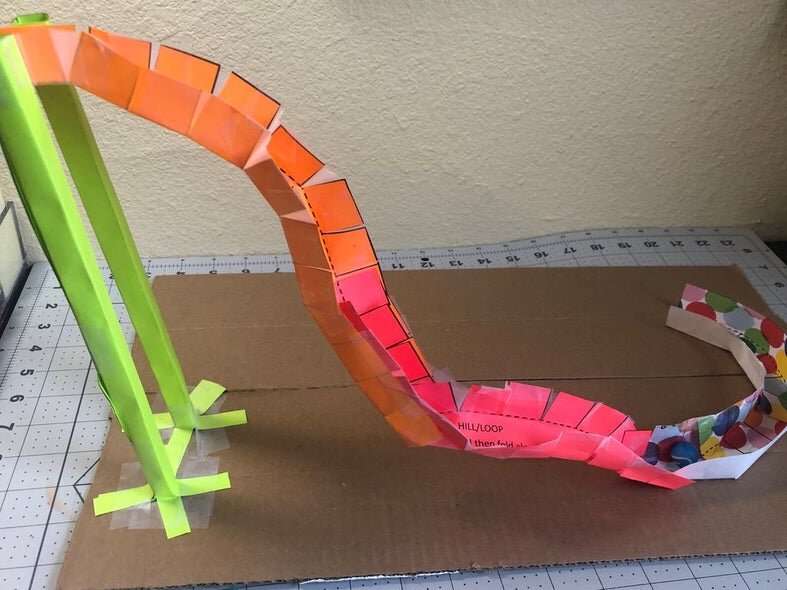Rollercoasters are all about physics! Unlike most moving vehicles, cars, trains, and buses that rely on engines, rollercoasters rely on gravitational potential energy. What goes up, must come down.
Potential energy is stored or held energy by an object that can be caused by an objects position or elevation, height off the ground. An example is when the rollercoaster is in its beginning position before it goes downhill.
When the coaster moves downhill, the potential energy is converted to kinetic energy, or the energy of motion. When it moves uphill it will lose kinetic energy by slowing down and gain potential energy. As the process continues through loops, hills, and turns, the rollercoaster will eventually come back the beginning, ending in potential energy.
To build a successful paper coaster, we’ll need to take these factors into consideration. You’ll have to make sure your marble has enough potential energy to make it through your whole track.
Supplies:
-
Paper
-
Tape
-
Scissors
-
Ruler
-
Pencil
-
Cardboard
-
Marble


